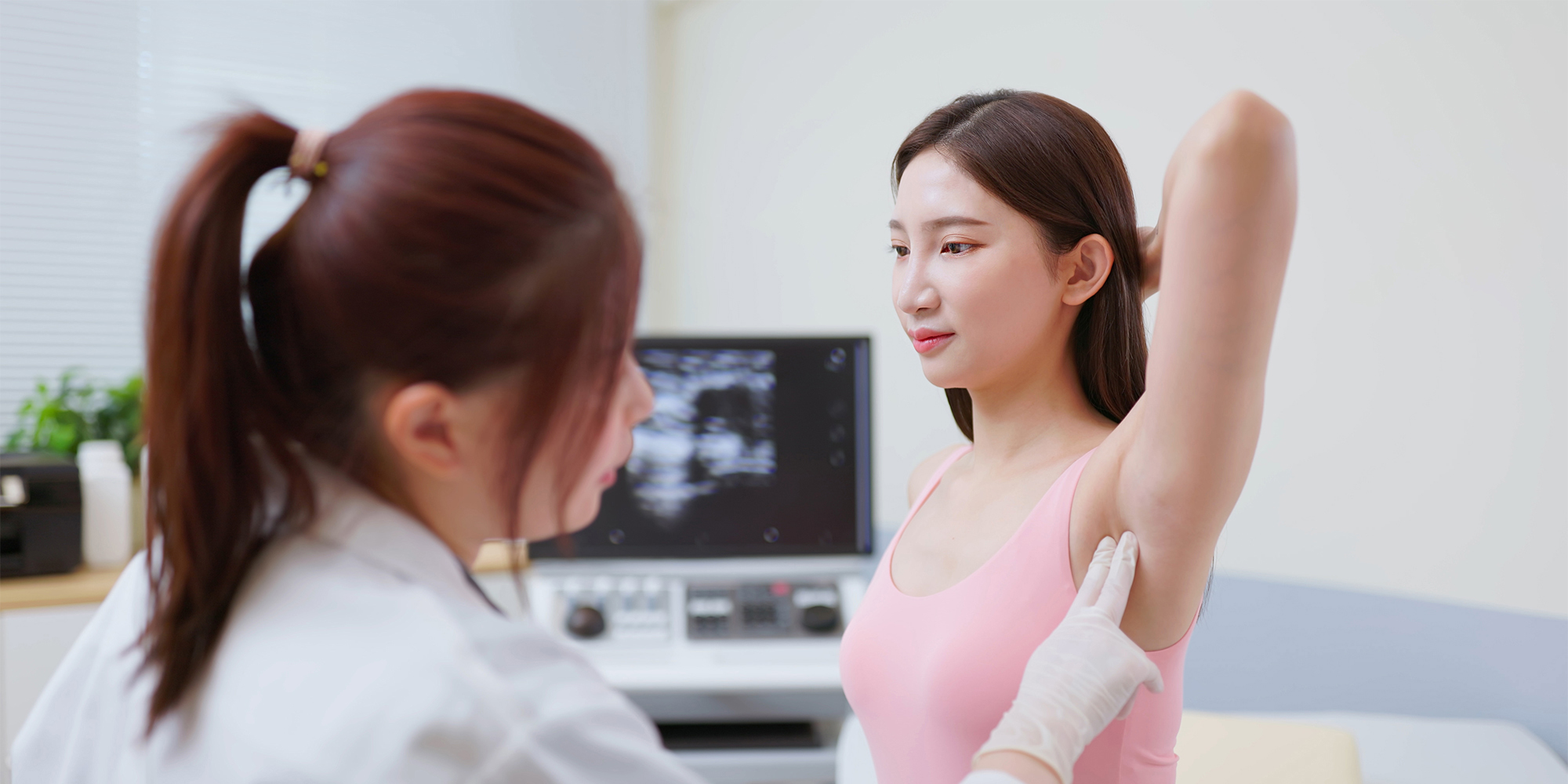Breast Cancer Facts that Might Surprise You
October 8, 2023
Categories: breast cancer, Cancer Care
Tags: Breast Cancer, Breast self exam
Breast cancer is one of the most common forms of the disease for women. Second only to skin cancer, 1-in-8 women, or 13%, develop breast cancer in the United States every year.
As the name suggests, breast cancer originates in the breast tissue. This disease occurs when breast cells grow out of control, creating tumors. It can travel to other parts of the body like other cancers.

However, with how much is known about breast cancer, there are still some facts that may come as a surprise. We talked with Dr. Chantal Reyna, chief of breast surgical oncology at Loyola Medicine, to learn more. "All women should understand the risk of developing breast cancer. To that end, it's important to understand all aspects of the disease," says Dr. Reyna.
Breast awareness is important
Regular breast exams are important. Young women can get breast cancer as well. All women, starting between the ages of 20 to 25, are recommended to perform a breast self-exam (BSE) once a month to three days after their period or on the same day every month. This is to feel for any abnormalities in the breasts.
However, while performing self-exams is good, routine practice, general breast awareness is just as important. Any new changes, such as a lump, skin discoloration, or nipple changes, all warrant further investigation. You see your breasts every day and know how they look and feel. Simply staying aware of any changes related to your breasts will help with early detection.
"What I recommend to people is not simply a breast exam," says Dr. Reyna. "Instead, I say you need to practice breast awareness. You need to notice differences in your breasts, whether that be a lump, your nipples are pulling inwards, or your skin is pulling. There's a lot of things that you need to be aware of."
A lump is not the only sign of breast cancer
Speaking of symptoms, it's important to understand the different signs of breast cancer. "Not every case of breast cancer will present with a lump," says Dr. Reyna.
While a lump in or near your breast or under the arm is the classic symptom, there are many others that you should be on the lookout for. These can include:
- Swelling around the breast, armpit or collarbone
- Redness around your breast
- Breast warmth and itching
- Changes to your nipples, including discharge
- Breast pain that lasts more than a month
This is where heightened breast awareness is crucial. By having general awareness of your breasts on a daily basis, you can catch these symptoms and report them to your doctor right away. All women, starting at the age of 25, are encouraged to speak to their physician about cancer risk assessments.
More births can mean a higher risk of aggressive breast cancer
There are multiple types of breast cancer. One such subtype is triple-negative breast cancer (TNBC), a highly aggressive form of the disease that accounts for roughly 10 to 15% of all cases. The name comes from the fact that the cancer cells don't have estrogen or progesterone receptors nor do they make a sufficient amount of a protein called HER2.
One risk factor for this particular form of breast cancer is the number of times a woman has given birth; the more children a woman has had, the higher her chances of TNBC. One study analyzed the reproductive history of 150,000 postmenopausal women. The researchers found a correlation between number of births and the development of TNBC.
Does this mean that pregnancy is a risk factor for breast cancer? No, not necessarily. Full-term pregnancies have long been associated with a reduced risk of breast cancer. And these researchers also found that women who remain childless have a 40% higher risk of the most common form of breast cancer.
Men get breast cancer, too!
Can men get breast cancer? Yes. However, the chance is small – only 1% of cases are diagnosed in men, about 2,800 cases – but it does happen. In 2023, breast cancer is anticipated to kill more men than testicular cancer.
In general, a family history of cancer is a risk factor for many forms of the disease; that goes for breast cancer, too. A woman's risk for breast cancer is higher if she has a first-degree relative or multiple family members from both sides who have had breast cancer. And a family history of male relatives with breast cancer can increase your own risk.
However, family history is still a relatively small risk factor.
"Familial breast cancer only explains about 10%," says Dr. Reyna. "However, male family members who have had breast cancer is a higher risk factor. If a male has breast cancer, we want to make sure that they don't have a genetic mutation. The family members should be screened sooner and potentially more often."
Why choose Loyola?
The treatment(s) your doctor recommends will depend on many factors. At Loyola, our providers have vast experience with breast cancer. The Oncology department at Loyola Medicine has one of the most comprehensive and advanced teams in the nation, with primary and specialty care offices conveniently located throughout Chicago’s western and southwestern suburbs.
Chantal Reyna, MD, is a breast surgical oncologist at Loyola Medicine who received her B.S. in Biology from the University of Nevada-Reno in 2004 and her M.D. from the University of Nevada, School of Medicine in 2008 where she also completed her residency in general surgery. Dr. Reyna then completed a fellowship in breast surgical oncology at the H Lee Moffitt Cancer Center and Research Institute.
Dr. Reyna is passionate about breast health. She loves having long-term relationships with patients. Shared decision making and providing education and guidance to patients is a top priority for Dr. Reyna.
Call 708-327-3040 to see Dr. Reyna.
